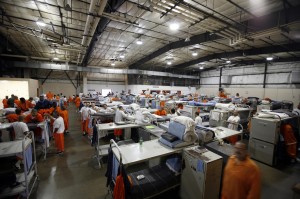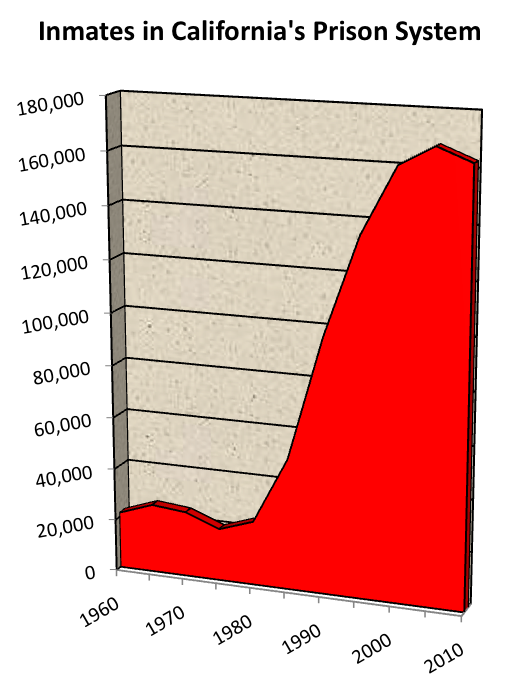California's prisons are old, crumbling, and packed to the gills with inmates. The inmate population exploded in the late 1980s and 90s. It rose almost 900 percent over three decades and reached an all-time high in 2006, with more than 172,000 inmates behind bars. During that same period, the state almost tripled the number of prison facilities:
in 1984 there were just 12 state prisons; by 2005, there were 33. (Check out the interactive feature on the statewide prison buildup)

Since its 2006 peak, when the inmate population was more than double the system's intended capacity, the ranks have dropped considerably. But prisons throughout the state are still woefully overcrowded, with stuffed cells and spillover inmates housed in make-shift bunk rooms.
But it wasn't always like this
 The graph on the right – looks like a scary ski slope – shows the increase in California's inmate population since 1960. Note the relatively steady levels until 1980 (even though California's general population more than doubled during that period). And then all of a sudden ... BOOM! Things explode.
The graph on the right – looks like a scary ski slope – shows the increase in California's inmate population since 1960. Note the relatively steady levels until 1980 (even though California's general population more than doubled during that period). And then all of a sudden ... BOOM! Things explode.